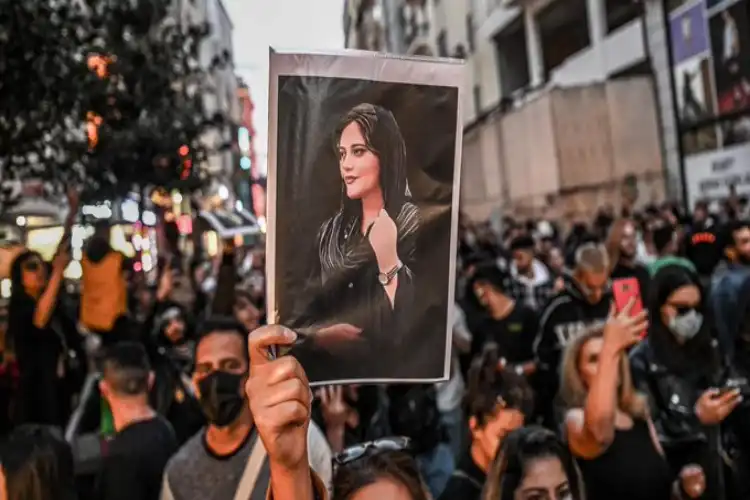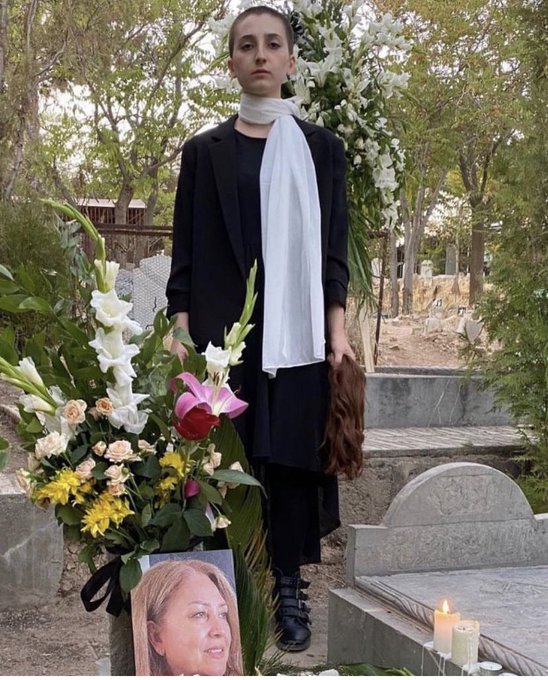
Kingshuk Chatterjee
The ruling regime of the Islamic Republic of Iran appears to be in a fix unlike any other since 1979. The death of Mahsa Amini, a Kurdish girl of 22 from the town of Saqez in north-western Iran during her visit to Tehran, is turning out to have been more potent in its symbolism than just another excess perpetrated against its citizens by an increasingly repressive regime. Iranian women, middle-aged as much as young, and now even schoolgirls are removing their headscarves (even burning them), cheered on by men.
The protests seem to be spreading from cities to provincial towns, leaving almost no place in Iran undisturbed. Significantly, the protests may not be driven by any overtly political agenda (as in 2009, over the disputed re-election of the then President Mahmoud Ahmadinejad) or even something as immediate as the unrelenting rise in prices (such as in 2019), and yet the protesters seem to be assailing the legitimacy of the Islamic Republic itself by shouting out the slogan Marg beh Diktatur (Death to the Dictator) against no less a functionary than the Supreme Leader ‘Ali Khamenei himself.
It is important to put these protests in perspective. The ‘hijab’ issue has been one of the most divisive in Iranian society for the last hundred years, and more. Historically, women in Persia/Iran had enjoyed far greater freedom and mobility than in almost any other part of the Muslim world, with many social and familial activities being virtually the exclusive preserve of the female members of the family.
In early twentieth century Persia, during a period of prolonged intellectual and political churning, the Iranian people had embarked on a phase of modernization that involved a degree of secularisation, including the forced removal of the hijab from any woman who chose to wear it. While women from the upper and middle echelons of society (especially in urban areas) embraced this set of changes gladly, women from the more traditional sections of the section found this forced secularisation disconcerting and removed themselves from the public space under duress.
When the modernizing but authoritarian Pahlavi regime was overthrown in 1979, one of the issues that divided the secular constitutionalist opponents of the Pahlavi rulers from the Islamic revolutionaries led by Ayatollah Khomeini was the fate of secularisation as an agenda. The Islamic element of the 1979 revolution was derived primarily from the more traditionalist provincial segments of the Iranian society, and once they successfully put their stamp on the revolution, the public space of Iran was deliberately and purposefully ‘Islamised’, which made the hijab mandatory was an important component.
Urban Iranian women were forced to resume wearing the hijab in public for fear of punishment, but in the private space of their own homes (and those of others), many Iranian women took off their hijab before they removed even their shoes.

An Iranian girl holding her hair and standing next to her mother's grave. The mother was killed while protesting against the hijab
was killed The Islamic regime was fully aware of the reluctance over the hijab, hence they resorted to its enforcement very deliberately right from 1979. A section of the revolutionary youth during the heady days of the 1980s, (later organized as the Basij militia with which Ahmadinejad was associated) was authorized by the more conservative sections of the establishment to function like a ‘morality police. In the 1990s, as the wave of reformism began to blow in the country with Sayyid Mohammad Khatami as first the Minister for Islamic Culture and Guidance, and then the President (1997-2005), enforcement by morality police was relaxed somewhat.
The state looked away when women covered up their heads only perfunctorily (paying lip service to the law) and women were encouraged back into public spaces (such as municipal parks) unaccompanied if they so choose. Such social progressivism under Khatami gave Iranian women a degree of freedom and hope that they did not have since 1979.
However, among the more socially conservative elements, this sparked a debate over the distinction between “Khob-hijab/bad-hijab” (proper hijab where no hair could be seen] and improper hijab [where some hair could be seen]). When Ahmadinejad became President, he gave voice to this conservative section by instituting morality police into the Gasht-e Ershad, as a designated body to enforce Islamic morality of which hijab was a very crucial component.
The incident that triggered the recent round of protests pertained to the arrest of Mahsa Amini from Iranian Kurdistan by the morality police of Tehran for putting on a bad-hijab. It seems the feisty girl resisted arrest because she was wearing the hijab (in this case a headscarf) and was then badly beaten up and her head was banged against a hard surface, (probably the police vehicle) causing death presumably from concussion.
Such rough handling by the morality police is altogether not uncommon (albeit not necessarily resulting in death). What is turning out to be uncommon is the determination with which for the first time since 1997 (the year of Khatami) the women of Iran are appearing prepared to stand up for their rights calling for “Zan, Zendegi, Azaadi” – i.e (dignity for the) Woman, (a decent) Life and Freedom. Further, this is the first time that the landscape of protest is spread across the country, across all the provinces, in big towns and small.
Still more significantly, during previous occasions demanding greater rights, there has seldom been any reference to the Supreme Leader (the incumbent being ‘Ali Khamenei) as a ‘dictator’ – indicating that the protests might acquire a political agenda over some time, not unlike 2009. The mere possibility seems to have rattled the regime – internet services have been severely curtailed in Iran for the last three weeks; from all accounts, brutal repression has been unleashed on the people, in line with the arch-conservative President Ebrahim Raisi’s promise to that effect. Khamenei himself took more than two weeks to give his first public reaction and blamed the disturbances squarely on instigation by America and the ‘Zionist’ state of Israel – meaning that the regime sees this as an existential struggle for which no instrument of repression need be spared.
ALSO READ Macron: I must admit Western hegemony coming to an end
And yet… Both President Raisi and Ali Khamenei have also tried to appear slightly mollifying, by lamenting the death of Mahsa Amini as ‘extremely painful’ and ‘breaking [my] heart.’ This defensiveness is uncharacteristic of the regime and might bring about some kind of course correction (such as on the issue of hijab). It could even be that the establishment fears that the disaffection over the hijab might conflate and converge with other issues – such as the economic disquiet over the relentless rise of prices and economic hardship, and the growing authoritarian disposition of the establishment. This might just be a turning point at which the Iranian society can turn, and begins the process of enduring changes in the country.
Kingshuk Chaterjee is Faculty, Department of History, Calcutta University
